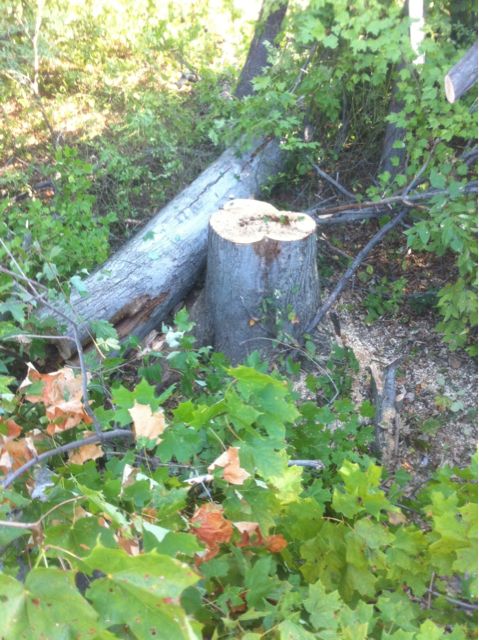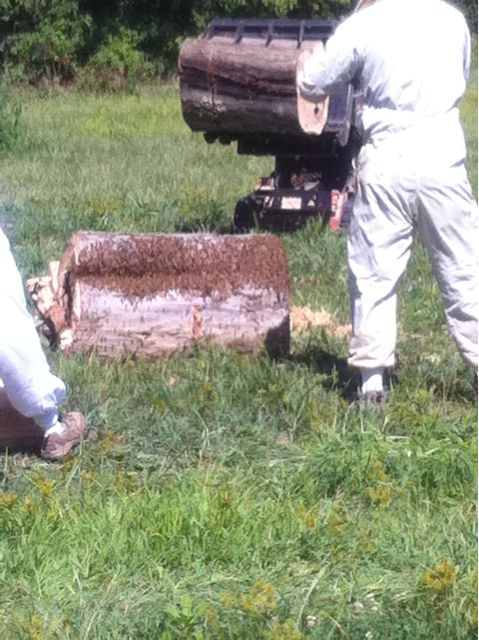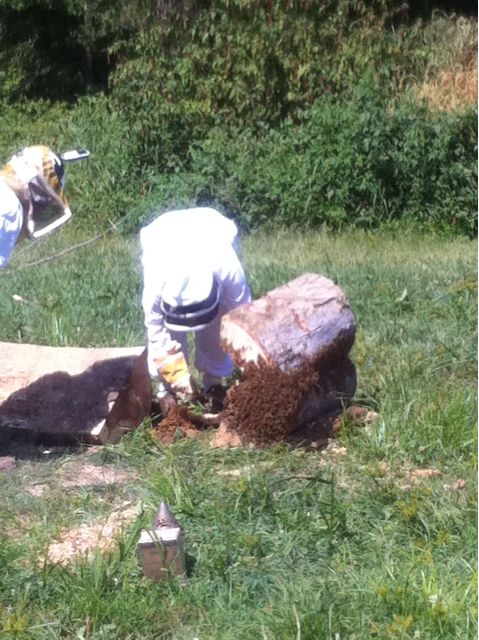Sorry to have left you hanging there, Reader. I went on a little vacation into the north woods. You can thank me for bringing all this nice weather home.
So, Dave and Kyle strung some rope to give tension and guide the tree as it fell; then Dave cut a notch from the tree trunk. As he did his opposite-side cut, the tree fell perfectly into the field.


Fortunately, we guessed correctly and cut the tree just at the base of the nest (funny…I say “we.” I don’t think I had a thing to do with this decision). Then, Dave and Kyle used their truck to pull the downed tree out into the open field where we could work. Before we got to the bees, though, the guys cut and hauled away the rest of the tree. That gave us plenty of clear room in which to work. Next, Dave and Kyle cut away at the tree trunk (and hauled away the pieces) until we exposed the top of the nest. So, all we were left with in the field was the section of trunk containing the bees.
At first, the bees were calm, but soon they began to pour from the tree…they weren’t flying so much as they were simply coating the interior and the exterior of the exposed log.


Deb was using my camera to snap these shots, but she didn’t have a bit of gear on other than my hat, so she didn’t feel comfortable getting too close at this point…which means we have no pictures of the comb as we cut it and placed it into frames. I think Dave is making a video (see the helmet cam he’s rigged up?), and I think that’ll show things up close. We’re just waiting for him to figure out how to use his new editing software.
We filled 15 medium frames with comb containing larvae and capped brood…there was absolutely zero honey…my theory is that when we first began cutting into the tree, the bees engorged themselves with whatever honey was stored in their comb. This is their behavior when they sense trouble or before they swarm—they immediately begin preparations for having to leave their hive behind, which means filling up with food enough to get them settled into a new home.
We used rubber bands to secure the comb into the frames. But once all the frames were in their new hive boxes, the bees didn’t want to follow them. Instead, the bees absolutely coated the inside and the outside of the open log. And once the comb had been removed from their home, they began to fill the air.
Here’s Dave’s first video:
